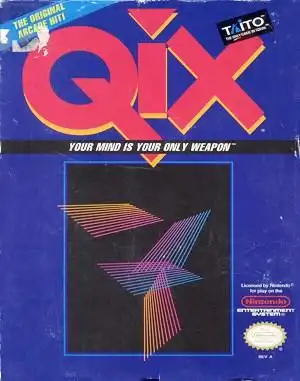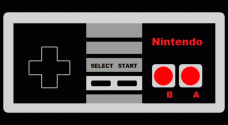QIX: The Abstract Arcade Classic That Hooked a Generation
Picture this: a stark, empty void on screen. Suddenly, a shimmering, erratic line appears, dancing and bouncing seemingly at random. This is the QIX. And your job? To fence it off, bit by bit, claiming territory in this abstract arena while a host of angry geometric shapes try to stop you. Welcome to the unique, tense, and utterly addictive world of QIX, Taito's 1981 arcade masterpiece.
Unlike the pixel-perfect platformers or spaceship shooters of the era, QIX offered something different. It was a game of nerve, strategy, and spatial reasoning, wrapped in a minimalist aesthetic that felt both futuristic and strangely primal. It wasn't about blasting aliens; it was about drawing lines and hoping the sparkly menace didn't touch you.
What Exactly is QIX? The Sparkly Menace Explained
At its core, QIX is a puzzle game disguised as an action title. You control a small marker that moves along the edges of the playfield. Your goal is to draw lines (called Stix) from the edge into the open space, connecting back to an existing line or the border to enclose an area. Once enclosed, that area fills with color, and you score points based on the size of the captured territory.
The challenge comes from the titular QIX itself – a non-corporeal, multi-segmented line that moves unpredictably within the unclaimed space. Touch it, and you lose a life. Simple, right? Not quite.
The Risky Business of Drawing Lines: QIX Gameplay Mechanics
Drawing lines is where the tension lies. You have two speeds: slow and fast.
- Slow Draw: This earns you double points for the area captured, but you move slower, making you more vulnerable to the Qix.
- Fast Draw: Less points, but you zip across the screen, reducing risk.
The danger isn't just the Qix. Small, diamond-shaped enemies called Sparx patrol the edges you're moving on. Touch a Sparx, and you're toast. As levels progress, more Sparx appear, and they can even mutate into faster Super Sparx that chase you along your unfinished lines!
Perhaps the most nerve-wracking mechanic is the Fuse. If you start drawing a line and stop before connecting it back, a fuse ignites along the unfinished line, racing towards your marker. If it reaches you, you lose a life. This punishes hesitation and forces you to commit to your risky draws.
To clear a level, you need to capture a certain percentage of the screen, usually 75%. Capture more, and you get bonus points. Later levels introduce two Qixes, and an advanced strategy involves splitting the screen into two separate regions, each containing one Qix, which instantly clears the level for a massive bonus.
Why QIX Hooked Us (and Still Does)
QIX was a commercial hit upon release, standing out in crowded arcades. Why?
- Unique Concept: There was nothing quite like it. It felt strategic yet chaotic.
- Easy to Learn, Hard to Master: The rules are simple, but executing them under pressure with unpredictable enemies is incredibly difficult.
- The Tension: Every line drawn is a gamble. Do you go for the slow, high-scoring draw? Do you risk a long line to capture a big chunk? The constant threat of the Qix and Sparx keeps you on edge.
- Addictive Loop: Losing a life often felt like your fault – you were too slow, too greedy, or hesitated. This fuels the "just one more try" mentality, perfect for an arcade coin-op.
- Abstract Aesthetic: The simple lines, vibrant fill colors, and the mesmerizing movement of the Qix had a cool, minimalist appeal.
It wasn't a game you could truly "beat" in the traditional sense; it was a game you tried to survive for as long as possible, pushing your luck with each new line.
From Arcades to Home: QIX Across the Systems
Given its popularity, QIX was ported to a staggering number of home systems throughout the 80s and early 90s. You could find it on:
- Atari 5200/8-bit
- Commodore 64
- DOS PCs
- Amiga
- Apple IIgs
- NES (Nintendo Entertainment System)
- Game Boy
- Atari Lynx
Each port had its quirks. The DOS version often featured that infamous PC speaker sound, while the Amiga port was praised for its improved graphics and sound effects. The Game Boy version was notably easier due to a slower Qix, perhaps making it more accessible for portable play. Experiencing these different versions today is a fun trip down memory lane for retro enthusiasts.
The Legacy of the Line Drawer
QIX wasn't just a one-off hit; it spawned sequels like Super Qix and Volfied (also known as Ultimate Qix or Qix Neo), and even modern remakes like Qix++. More significantly, its core gameplay mechanic of drawing lines to reveal or capture area influenced countless games, most famously the Gals Panic series and the entire subgenre of "reveal" games that followed. It left an undeniable mark on video game design.
Playing QIX Today
Feeling nostalgic? Want to experience the nerve-wracking thrill of drawing lines inches away from the Qix? Luckily, playing QIX in the modern era is quite possible.
- Digital Stores: Check platforms like GOG.com or Steam. While the original arcade version might not be there, official ports or remakes are sometimes available.
- Emulation: For the classic arcade or home computer experience, emulation is a popular route. Projects like MAME for arcade or DOSBox for the PC version can bring QIX back to life on your modern machine. Websites like Archive.org often host playable browser-based versions of classic DOS games, including Qix.
- Modern Ports/Remakes: Search for Qix++ or Battle Qix on digital console stores.
For the best experience, consider using a USB gamepad, especially for the arcade or console ports, as it often feels more authentic than a keyboard.
Frequently Asked Questions About QIX
- What does Qix stand for? Taito stated the name is pronounced "kicks" and doesn't stand for anything specific, though some theories suggest it's related to "kicks" or the visual appearance.
- Who developed Qix? The arcade original was developed by Randy and Sandy Pfeiffer and published by Taito America.
- Is Qix a puzzle game or an action game? It's often categorized as a puzzle or action-puzzle game. While it requires quick reflexes (action), the core mechanic is about strategic area control (puzzle).
- What percentage do you need to clear a Qix level? Typically, you need to claim 75% of the playfield to advance.
The Enduring Appeal of QIX
QIX remains a fascinating footnote in arcade history. It defied genre norms, offered a unique challenge, and created a level of tension few games could match with such simple elements. It’s a game that proves you don't need complex graphics or intricate stories to create an unforgettable, addictive experience. If you've never played it, or if it's been decades since you last dared to draw a line near the sparkly menace, give QIX another look. Just be warned: that "one more try" feeling is just as strong today as it was in 1981.


